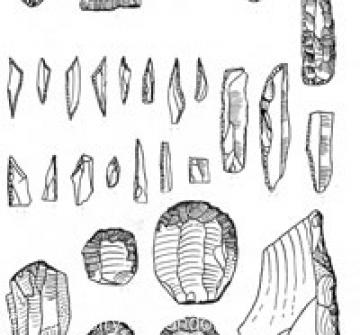Prehistoric and Roman Bolsover

Bolsover lies on a plateau of magnesian limestone, which creates a soil that is lighter and easier to cultivate than the heavy clay of the coal measures immediately to the west. This contrast means that today there is far more arable land than on the coal measures; historically it means that there is far more evidence for early settlement in Bolsover and parishes immediately to the north and south than in those to the west. Apart from the important Ice Age remains at Creswell Crags, the caves a few miles away to the north-east, prehistoric finds are relatively numerous across the whole of the limestone plateau. In Bolsover itself evidence has been found over a number of years in a garden in the town for a Mesolithic `narrow blade' industry, where flint brought from elsewhere was worked into tools. Excavations in the grounds of the district council offices at Sherwood Lodge in 1992–3 found slight traces of both Mesolithic and Neolithic occupation, while a rock shelter at Whaley in the east of the parish has produced what appears to be a Neolithic female skull and some 35 sherds of Neolithic pottery. From the Bronze Age twelve small settlement sites were located during fieldwork in 1976–7 around Bolsover.
Content generated during research for the paperback book 'Bolsover: Castle, Town and Colliery' (ISBN 13 : 978-1-86077-484-3) for the England's Past for Everyone series

